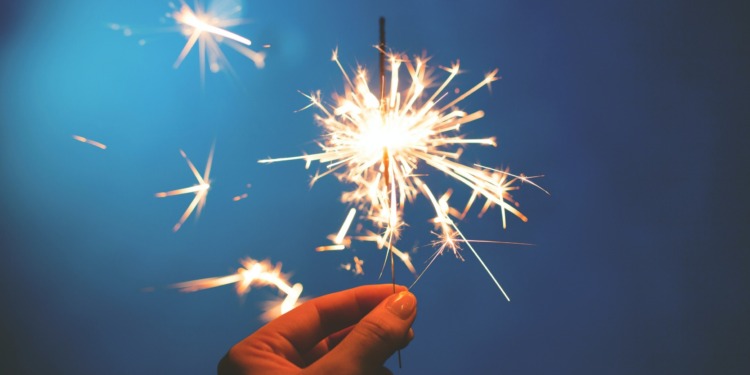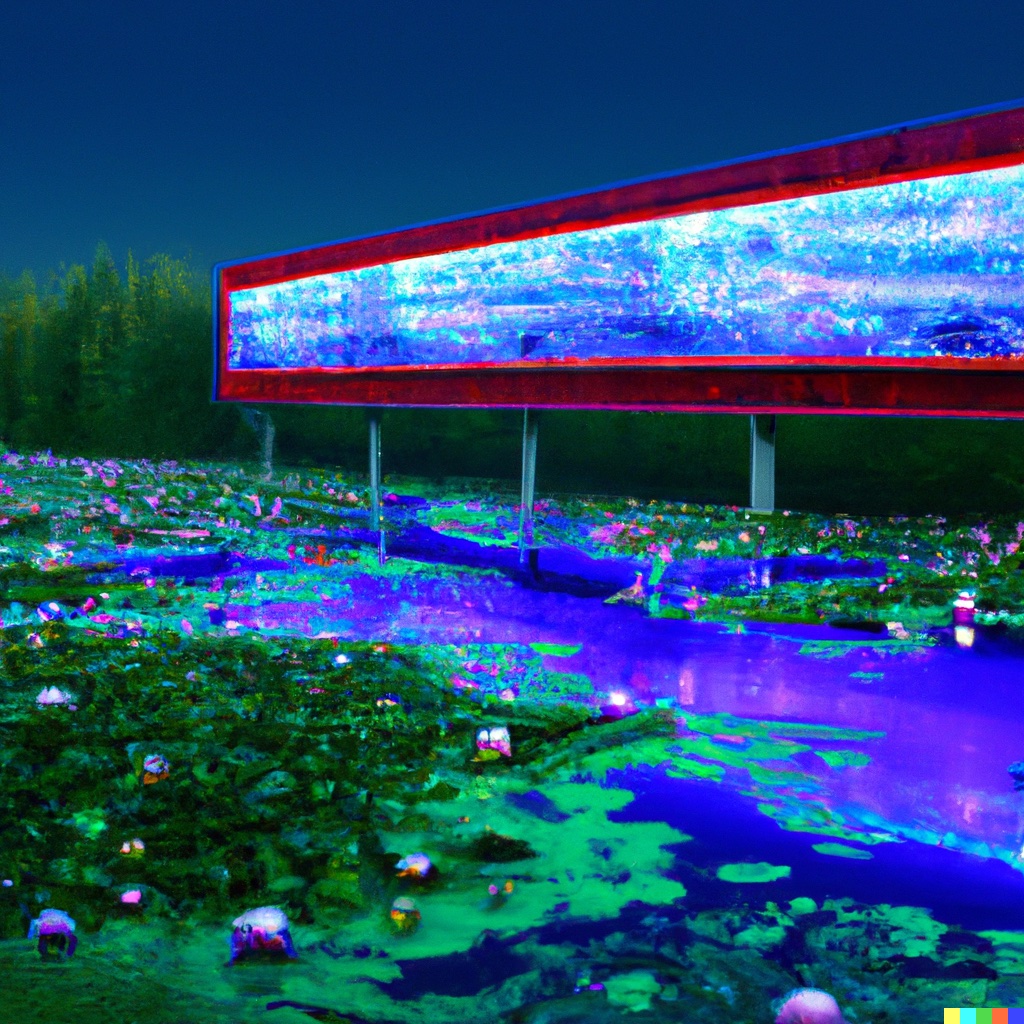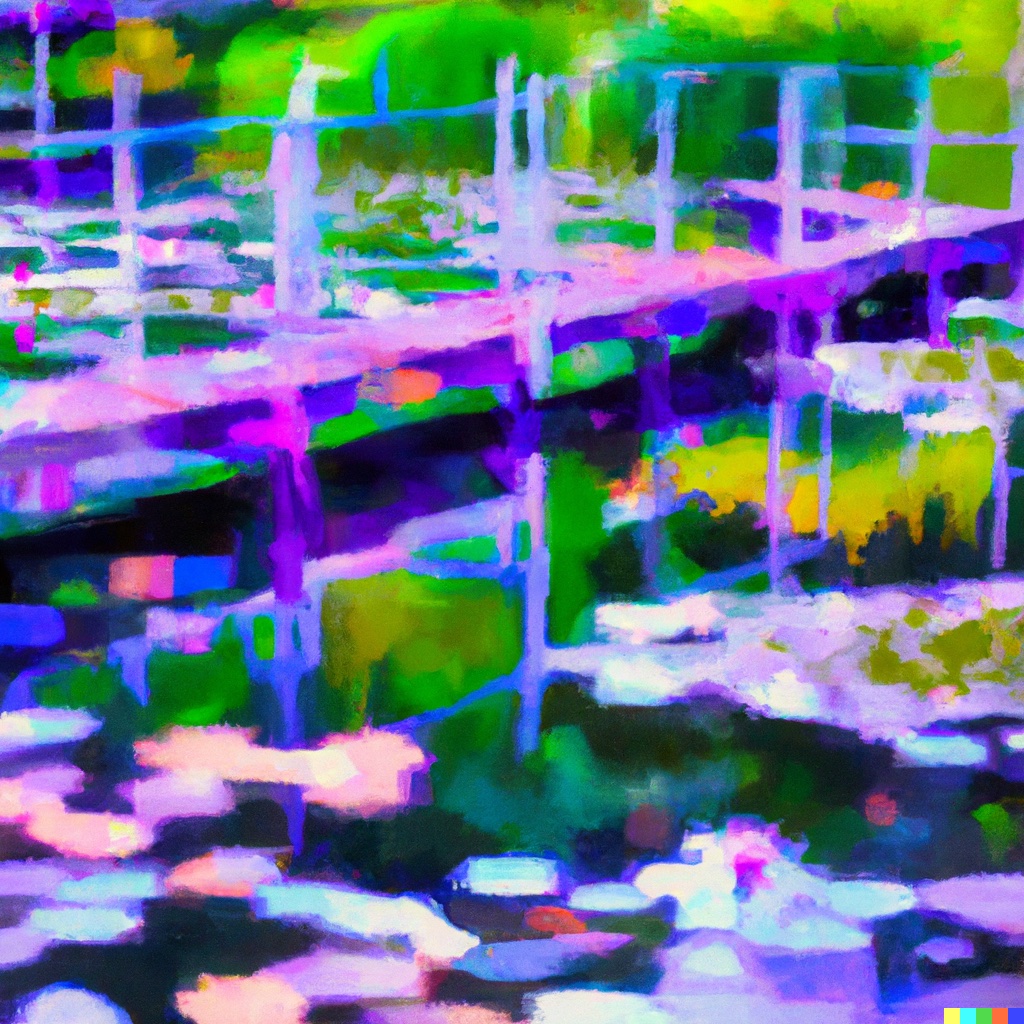It took Monet nearly three decades to complete his full collection of “Nymphéas” or “Water Lilies” paintings, yet as technology developed, images of the same Normandy water garden were able to be captured by a photographer in a much shorter timescale. You could imagine that the creativity of a camera was perhaps once questioned, yet the pictures it captures can arguably be equally as revered as oil-painted masterpieces today.
Perhaps a parallel can be drawn between this and the questions being raised around AI and the art world.
Once represented in popular culture by a sunglasses-clad cyborg assassin in the movies, the man vs. machine battle has now evolved into an era-defining culture war.
Some say AI can fuel new levels of creativity, whilst others question whether a computer can really show true creativity.
Amidst this battle, however, there is perhaps at least one thing that artists and AI can still agree on: Human hands are really hard to draw.
AI is approaching human level intelligence.
How do I know? It’s about as bad at drawing hands as humans are 🤮#AI #Singularity pic.twitter.com/fyNOGeMBk1
— Fedja Bosnic (@fedjabosnic) January 31, 2023
Could AI replace creatives?
As AI image generator platforms such as OpenAI’s DALL-E, Midjourney and Stable Diffusion have erupted, both traditional and digital artists have found themselves going head-to-head with computers.
Some have begun questioning if the images generated by AI can actually constitute art, while others have suggested that such images could infringe on copyright and undermine the craft they’ve spent many years perfecting.
What’s more, some artists have begun adding a “Do not AI” label to their Twitter profiles.
Despite this, however, AI-made artwork has been popping up more and more, with some AI-generated work even winning competition trophies.
This painting has caused a surprising amount of controversy.
Théâtre D’opéra Spatial by Jason M. Allen won the Colorado State Fair in the digital art category, but the fact that it is AI generated has sparked debate on what constitutes art. What do you think? pic.twitter.com/CEPtnsPq3f
— Avant Arte (@avant_arte) September 10, 2022
The AI art scene is booming
Exhibitions like Deep Fake have shone a spotlight on AI generated artwork, while one AI artist reimagined women as different countries.
AI-Generated Art Personifies Countries as Different Women Across the Globehttps://t.co/AYNcxVR2v0 @mymodernmet#ArtificialIntelligence #AI #DataScience #100DaysOfCode #Python #MachineLearning #BigData #DeepLearning #NLP #Robots #IoT pic.twitter.com/EQlPoQ73fP
— Ravi Dugh (@ravidugh) February 21, 2023
PATRÓN have launched their own AI image generator for tequila fans to design the margarita of their dreams.
Craft a PATRÓN Dream Margarita with AI for #NationalMargaritaDay, share it with #PatronDreamMargarita & #PatronSweepstakes, and tag @Patron for a chance to see @iambeckyg! https://t.co/99kE2trggl NoPurNec. Open to US residents, 21+. Ends on 2/24/23. Rules: https://t.co/3KEGpGF6XS pic.twitter.com/D4e5JowTnA
— Patrón Tequila (@Patron) February 17, 2023
Architects are using AI art generators to design and visualise fantastical structures, with Parametric Architecture spotlighting the work of architects using AI for creative purposes.
Designed by Ross Lovegrove, the “Cosmic Odyssey” is a series of AI- Generated projects featuring inflatable architecture for outdoor concerts and public events.
Tap the 🔗 link to read more about this project: https://t.co/P151lXqB4I#midjourney #midjourneyarchitecture pic.twitter.com/HiCxGkxAA1
— ParametricArchitecture (@parametricarch) February 15, 2023
Publishing and print industries are also embracing AI, with news outlets like The Economist and some authors having used AI to design cover images.
It is time to look at the promise and perils of the next big thing in machine intelligence. Join us on this new frontier https://t.co/jqVkAvpnAZ pic.twitter.com/1NkLZUI8dk
— The Economist (@TheEconomist) June 9, 2022
Even some in the fashion world are successfully navigating the space between neural networks and New York Fashion Week, with digital designers such as The Fabricant designing and spotlighting AI fashion.
GM to all the digital and AI fashion designers💥🚀🌈⚡🎨
This creation by @Selene_visuals is otherworldly!🤯
Submissions for the XXories Remix challenge close TODAY on @joynxyz at 23:59 CET
🏆Enter for a chance to win part of the 1 ETH prize pool
➡️ https://t.co/H9kVWPM7N4 pic.twitter.com/HV85aI03xX
— The Fabricant – PRIMAL RAVE mint open (@thefabricant) May 3, 2023
Salvador Dali vs. Salvador DALL-E
The ongoing debate all boils down to one particular question: Can computers ever replicate the level of creativity some say requires a distinct je-ne-sais-quoi human quality?
The automation and rigidity we associate with computers can feel like a far cry from unquantifiable properties of imagination and creativity. Where there’s no feeling, there’s no imagination, right?
Marcus du Sautoy, Professor at Oxford University, mathematician and author of “The Creativity Code,” has said that AI could potentially help to inspire creativity.
Related Articles: Art Made by AI Wins Fine Arts Competition | 5 Eco-Conscious Digital Art Exhibitions to ‘Visit’ From the Comfort of Your Couch | DeviantArt Users Are Furious Over the Launch of its AI Art Tool
However, there is some debate around whether AI can fit in with the arts, or whether it possibly even undermines human artwork.
Recently, when the Mauritshuis art museum in The Hague loaned Johannes Vermeer’s famous “Girl with a Pearl Earring” to the Rijksmuseum in Amsterdam, concerns were reportedly sparked by them hanging “A Girl With Glowing Earrings” by Julian van Dieken – an AI piece made using Midjourney – in its place.
“A Girl With Glowing Earrings” is hanging in the Mauritshuis museum in The Hague in the “Vermeer room” right now.
It’s exhibited with four other (non-AI) images at the same spot where you can usually see the original painting “A Girl with a Pearl Earring.” pic.twitter.com/wIzuenI8Wp— Kyle Hailey (@kylelf_) February 19, 2023
In Australia, an AI-made “photograph” of surfers on a beach won a photography competition, only to later have the title reallocated to a human-made piece once the panel found out the image was in fact computer-generated. The organisers did however go on to announce the establishment of a new contest which allows both human- and AI-made entries, to “settle the man vs machine, or photo vs image, debate, on a level playing field.”
Congrats to Jane Eykes, winner of our SUMMER Photo Contest!
This week’s contest is AT THE ZOO, enter at https://t.co/vUEUt0f5cn pic.twitter.com/hu0YBmTr1o— digiDirect Australia (@digiDirect_AU) February 1, 2023
It could be said that as a global society we may, understandably, dislike that which challenges the known status quo. However, even Cubism was initially regarded as absurd by some rather than admired. Is it therefore possible that the AI art wave we are currently seeing rise is just the beginning of a new artistic movement, just as Impressionism or Cubism were in their own times respectively?
Regardless of the answer to this question, whether you support AI-made art or not, there are still a myriad of other legal and economic questions that also need to be addressed, namely:
Who owns the artwork made by AI? And does how does copyright play into this?
Who owns AI-made art?
In order to generate an AI image, the model first needs to know what you’re looking for – the internet is a big place without any guidance parameters. This is where prompts come in.
For example, the following images were created by inputing a prompt along the lines of “a futuristic version of Claude Monet’s ‘Bridge Over a Pond of Waterlilies'” into DALL-E:
Including the names of artists in prompts or training models on existing artwork in this way is largely intended as a direction for the AI as to what the resultant image should look like or feature.
However, this also raises a whole host of consent and copyright questions, as anything from an individual’s unique brush stroke style can be replicated without necessarily gaining authorisation from the artist themselves.
For example, Greg Rutkowski, a digital fantasy landscape artist who has created game artwork for the likes of Sony and Ubisoft, amongst others, is a more popular prompt ingredient than Michelangelo, Pablo Picasso or Leonardo da Vinci, according to MIT Technology Review.
Does the AI artist own the generated artwork?
There is a general consensus that the individual responsible for crafting AI-made artwork is also the holder of that image’s rights.
However, this week the US Copyright Office moved to retract the rights to images in a graphic novel, “Zarya of the Dawn,” which author Kristina Kashtanova created using Midjourney.
Though Kashtanova is permitted to hold the rights to other elements of the book, such as the story, the office deemed the book’s images as “not the product of human authorship,” and therefore cannot be copyrighted.
So if the AI artist doesn’t own the artwork…
Do the original artists who inspired the artwork own it?
When an AI model takes inspiration from existing artwork or copyrighted images, should the artists or image banks who created or own the originals have the right to lay claim, at least in part, to the AI derivatives?
Getty Images has announced it would be filing charges against Stability AI, Stable Diffusion’s parent company, for scraping Getty copyrighted images.
Some artists have also initiated lawsuits against platforms like Stable Diffusion and Midjourney which they allege have used their work within AI training unauthorised. In some cases, some claim that artists signatures have even been spotted within AI generated images, further fuelling the creative community’s concerns over consent.
As a result, many artists are now calling for their work to be removed from the training databases of AI research institutes and companies, requesting that prior authorisation must be given before they are included in the first place.
But could it also possibly be argued that the AI is drawing inspiration from the artwork they observe, much like any artist would? We perhaps therefore need to ask another question: Who owns inspiration?
As well as the art from other artists, one could also say that artwork is also borne from the observations, experiences and memories that an individual collects throughout their life – kind of like a subconscious bookshelf – which ultimately culminate in inspiration and expression.
Does AI itself own the artwork it produces?
Given that the entire world still seems fairly split on the question of whether AI possesses creativity, it’s probably a stretch to conclude that it will be granted rights to its own artwork in the near future.
Besides, we can probably all agree that AI doesn’t possess the level of autonomy required to own things.
However, AI can already do so much; e.g., help write essays, articles and poetry, answer the world’s biggest questions, compose music, assist with legal advice, and possibly aid diagnoses.
OpenAI CTO, Mira Murati warns in the company’s video on human alignment:
“Very quickly we can end up in a place where machines are far more capable than us.”
OpenAI’s Human Alignment team lead, Jan Leike, also said:
“As AI systems get more capable, they don’t automatically become better at doing what humans want,” adding: “In fact, sometimes they become less inclined to follow intentions.”
OpenAI are working to develop safe and responsible AI, with their alignment research which “aims to make artificial general intelligence (AGI) aligned with human values and follow human intent.”
AI creates brand new forms of expression
AI can help fuel progression and creativity, but that doesn’t mean its without limitations; it could also perpetuate forms of bias.
Tracey Spicer, whose new book “Man-Made” delves into “how the bias of the past is being built into the future,” said in an article for the Guardian, “these baby biases become troublesome teenagers through machine learning. The bots are increasingly bigoted, like white supremacists neck-deep in conspiracy theory websites.”
In the book and article, Spicer explains how AI is using algorithms trained on “stereotypical images and words.”
“While humans are inherently biased, technology is replicating inequity at scale,” writes Spicer.
However, with the help of important initiatives such as OpenAI’s Human Alignment project, we can hopefully ensure AI develops safely, sustainably, and in a way that brings benefit to humanity, as is part of OpenAI’s mission: “to ensure that artificial general intelligence benefits all of humanity.”
In the same way that we prompt AI to create images, perhaps it can also “prompt” us to discover new levels of creativity in return, as Jim Davies touched on in his recent article for Nautilus titled “How AI Can Prompt Your Inner Artist.”
Rather than replace anyone, perhaps AI can be considered as a tool that provides an alternative angle from which to observe and create, exponentially increasing self-expression in new and exciting ways as part of a movement of machine-augmented creativity.
Kind of like the latest hi-tech model of paintbrush?
— no context memes (@weirddalle) January 22, 2023
— —
Correction: This article has been updated since initial publication to reorganise and shorten introduction; add quotes throughout for additional context; amend the subheading and introduction of the “Could AI replace creatives?” section; clarify the specifics of AI art exhibitions and the Australian photography competition; and remove the following: paragraphs on NFTs as well as Sam Altman’s podcast interview due to being unrelated, quote from the “Salvador Dali vs. Salvador DALL-E” section, and names of AI artists in the “Who owns AI-made art?” section.
Editor’s Note: The opinions expressed here by the authors are their own, not those of Impakter.com — In the Featured Photo: Person holding a sparkler. Featured Photo Credit: Stephanie McCabe/Unsplash












